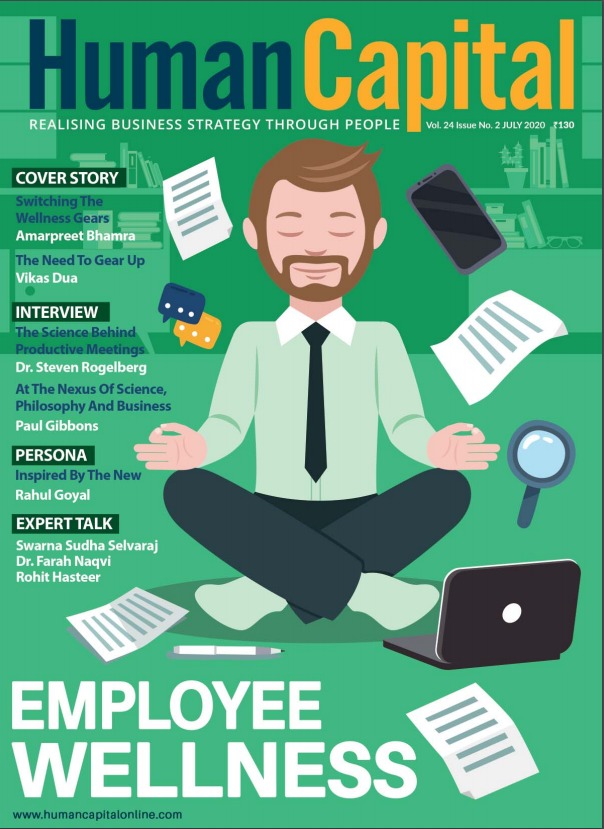
How better acoustics play a role in improving workplace productivity
How better acoustics play a role in improving workplace productivity
Noise is the single greatest negative factor impacting worker productivity in offices across the nation.
Recent studies indicate[1] that noise pollution in offices is one of the main reasons that contribute to poor workplace productivity. Studies have also shown that trying to perform knowledge-based tasks in a densely occupied office space are difficult and productivity can be hampered.
Nowadays, offices are increasingly adopting the modern open-plan office design, providing a sleek and neat look to the interiors of workplaces.
An open plan office provides employees a space to for creativity and collaboration.
Open plan is the architectural and interior design for any floor plan which uses large, open spaces and minimizes the use of small, enclosed rooms such as private offices.
However, research suggests as more and more offices adopt new open-plan and open cubicle interior designs, productivity of employees is on the decline.
According to a study conducted by the University of California, Berkeley, where 65,000 people from across continents were surveyed over the past decade, more than half of office workers are dissatisfied with the level of “speech privacy” leading to disruption in their work[2].
The research also indicated that almost 62% of office workers face difficulty in finding privacy and space at work. Additionally, 57% of them do nothing to address the problem of noise in their workplaces[3].
While open plan office spaces are a great way for employees to collaborate and share thoughts and ideas, the acoustics of any workplace need to be well thought out as part of the initial design concept to prevent disruption in work flow.
Some of the common instances of workplace noise are:
1. Significantly higher workstation densities with more people occupying the same physical space
2. Employees working in closer proximity to one another in open offices
3. The widespread use of speaker phones and the tendency of office workers to speak more loudly when using them
4. Greater use of video conferencing equipment, adding more noise and concentrating louder noise levels in specific areas of the workspace
5. Hard surfaces such as bricks, stone, and glass prevent sound absorption and hence need to be avoided
6. Foam and heavy drapes absorb higher frequency sounds, lower frequencies continue to prevail.
As advancement in office space and design technology continues, it is possible for open plan offices to harbour collaboration as well as reduce additional and unwanted noise.
A good acoustic environment can improve task motivation by 66% and increase performance during tasks up to 50%.
So, what are some of the ways in which offices can improve their design, as a result, reducing unwanted noise and helpingincrease their employee productivity?
1. Intelligent Layout
1. Design should separate noise producing areas from noise sensitive areas. A simple example is meeting rooms should not be located close to server rooms or cafeterias. This will also allow employees dedicated quiet spaces to discuss and carry forward important tasks at work
2. For a variety of tasks in office spaces such as meetings, brainstorming sessions, etc., the following layout and design solutions are favourablefor sound absorption for unwanted noise:
2. Informal meetings:In a typical office, informal conversations and meetings are very common in canteens and breakout spaces of offices. These spaces are often large and can have high soffits. In these instances, sound-absorbing elements of ceilings and walls work best. If adjacent to workspaces, soundabsorbingscreens are recommendedas dividers and to prevent soundpropagation. It is also recommended tothink about the location of the informalmeeting spaces so they are not too closeto activities that demand concentration
1. Multi-tasking:Responding to e-mails, preparing presentations along with the occasional phone conversations and discussing daily tasks across desks are all part of daily multi-tasking activities in an office environment. A sound-absorbing ceiling with good absorption qualitiesas well as sound-absorbing screens that help divide off sections in the office for groups are suitable for such situations.
2. Teamwork:A project room needs sound insulation, a sound-absorbing ceiling with good absorption qualities at low frequencies, and wall absorbers. In a semi-open or open space you need a sound-absorbing ceiling with good absorption qualities at speech frequencies, and if people in adjacent areas can be disturbed, sound-absorbing screens
3. Brainstorming: Sound insulation, a soundabsorbing ceiling or free-hanging units, and wall absorbers covering at least one wall, but preferably two adjacent walls
4. Phone intensive: A sound-absorbing ceiling with the best absorption qualities at all frequencies, sound-absorbing screens dividing people into groups and wall absorbers where possible
a.Acoustic telephone booth: While this a concept still very nascent to India, acoustic telephone booths are now being installed in offices overseas. They allow you to make phone calls with an acoustic and visual protection which won't disturb your colleagues. Such places strongly feel the need for sound insulation walls which ensure utmost privacy during communication.
1. Focus work: For both cellular offices and concentration spaces, one requires sound insulation, such as a sound-absorbing ceiling and wall absorbers on at least one wall.
2. Formal meetings:In order to hold constructive meetings in workplaces, it is important for everybody to be able to hear and follow each other as well as participate in discussions. However, it is also important to prevent the sounds of the meeting fromspreading to others in the office.
Speech will often bounce off of hard surfaces creating echoes that obscure speech. Hence, a sound-absorbing ceiling with good absorption qualities for low frequencies and wall absorbers covering two adjacent walls would be beneficial. Moreover it is equally important to restrict the sound to pass on to adjacent meeting rooms and thus it is a good idea to have walls that are backed with insulation material.
3. For instances where it might not be possible for workplaces to make major changes to their internal design and architecture, sound absorbing materials can be introduced. These allow additional noise reduction without the sacrifice of interior design.
1. Noise Friendly Flooring: Hard flooring surfaces like natural wood, porcelain and ceramic add to noise in the workplace. While carpet is an ideal flooring solution for noise reduction, vinyl flooring is another alternative due to its ease in maintenance and variety of design options
2. Sound Friendly Furniture: Couches and lounge chairs, wall partitions, and filing cabinets can all have an impact on the acoustics of an open office space—especially high backed couches or enclosed booths that essentially separate a person from the rest of the room.
Global studies show that improvement in office design and structure for noise control in workplaces has resulted in up to 16% reduction in perceived disturbance in general and almost 11% reduction in cognitive stress.
As more and more offices both in India and overseas continue to adapt an open office plan layout, internationally accepted solutions for acoustics such as sound-absorbing ceilings, wall absorbers and sound-absorbing screens will become increasingly significant for better employee productivity.
[1]According to a study conducted by the University of Sydney, noise pollution is the main complaint by employees. Additionally, lack of sound privacy was one of the key aspects that contributed to poor workplace morale.
[2]Research conducted by University of California across continents, over the past decadementions that more than half of the office employees out of the 65,000 people surveyed have complained of workplace noise leading to lack of speech privacy
[3] https://www.scribd.com/document/142926011/Office-Acoustics-Infographic
Has COVID-19 forever changed the way we live and work?
Trending
-
SBI General Insurance Launches Digital Health Campaign
-
CredR Rolls Out 'Life Happens' Leave For Its Employees
-
Meesho Announces 30-Week Gender-Neutral Parental Leave Policy
-
Microsoft Unveils Tech Resilience Curriculum To Foster An Inclusive Future
-
60% Indian Professionals Looking For Job Change Due To COVID: Survey
-
SpringPeople And Siemens Collaborate For Digital Transformation Push
-
86% Professionals Believe Hybrid Work Is Essential For Work Life Balance: Report
-
Almost 1 In Every 3 People's Personal Life Affected Due To Work Stress
-
Meesho Rolls Out Reset And Recharge Policy For Employees
-
80% Of Talent Leaders & Academics Say Pandemic Changed Skill Needs For Youth: Report
-
Hero Electric Rolls Out 'Hero Care' Program For Employees
-
Human Capital In Collaboration With ASSOCHAM Hosts Virtual Conference
-
IKEA India, Tata STRIVE Collaborate To Create Employability And Entrepreneurship Opportunities
-
SAP India, Microsoft Launch Tech Skilling Program for Young Women
-
DXC Technology, NASSCOM Collaborate For Employability Skills Program
-
Lenskart To Hire Over 2000 Employees Across India By 2022
-
Mindtree Launches Learn-and-Earn Program
-
Tata AIA Extends 'Raksha Ka Teeka' To Its Employees
-
Swadesh Behera Is The New CPO Of Titan
-
NetConnect Global Plans To Recruit 5000 Tech Professionals In India
-
Hubhopper Plans To Hire 60% Of Indian Podcasters By 2022
-
Corporate India Needs More Women In Leadership Roles: Report
-
Aon to Invest $30 Million and Create 10,000 Apprenticeships by 2030
-
Tech Mahindra Launches ‘Gift a Career’ Initiative for Upskilling of Youth
-
40% Women Prefer Flexible Working Options in Post-COVID World: Survey
-
3 out of 4 companies believe they can effectively hire employees virtually: Report
-
Vodafone , CGI and NASSCOM Foundation launch digital skills platform
-
Odisha: Bank, postal employees to deliver cash for elderly, differently-abled persons
-
Skill India launches AI-based digital platform for "Skilled Workforce"
-
Hiring activity declines 6.73% in first quarter: Survey
-
70% startups impacted by COVID-19 pandemic
-
Bajaj Allianz Life ropes in Santanu Banerjee as CHRO
-
Over 70 Percent MSMEs look at cutting jobs to sustain businesses
-
93 Per Cent employees stressed about returning to office post-lockdown
-
Johnson & Johnson India announces family benefits for same gender partners
-
Indian firms turning friendly towards working mothers
-
Welspun India names Rajendra Mehta as new CHRO
-
Wipro partners with NASSCOM to launch Future Skills platform



Human Capital is niche media organisation for HR and Corporate. Our aim is to create an outstanding user experience for all our clients, readers, employers and employees through inspiring, industry-leading content pieces in the form of case studies, analysis, expert reports, authored articles and blogs. We cover topics such as talent acquisition, learning and development, diversity and inclusion, leadership, compensation, recruitment and many more.
Subscribe Now











































Comment